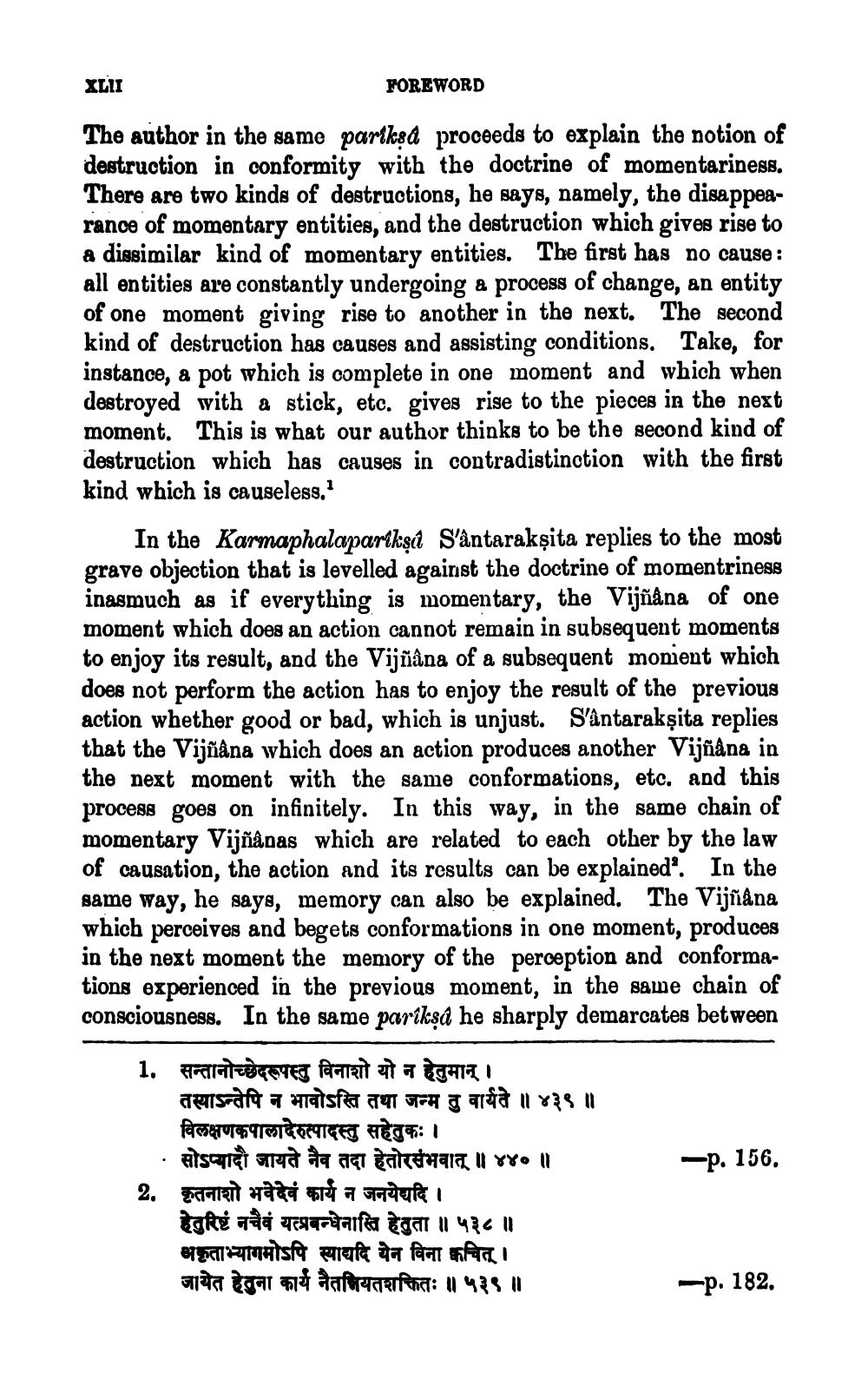________________
FOREWORD
ΣΙΙ The author in the same pariksd proceeds to explain the notion of destruction in conformity with the doctrine of momentariness. There are two kinds of destructions, he says, namely, the disappearance of momentary entities, and the destruction which gives rise to a dissimilar kind of momentary entities. The first has no cause : all entities are constantly undergoing a process of change, an entity of one moment giving rise to another in the next. The second kind of destruction has causes and assisting conditions. Take, for instance, a pot which is complete in one moment and which when destroyed with a stick, etc. gives rise to the pieces in the next moment. This is what our author thinks to be the second kind of destruction which has causes in contradistinction with the first kind which is causeless."
In the Karmaphalapariksa S'ântarakṣita replies to the most grave objection that is levelled against the doctrine of momentriness inasmuch as if everything is momentary, the Vijñana of one moment which does an action cannot remain in subsequent moments to enjoy its result, and the Vijñâna of a subsequent monient which does not perform the action has to enjoy the result of the previous action whether good or bad, which is unjust. S'ântarakṣita replies that the Vijñâna which does an action produces another Vijñana in the next moment with the same conformations, etc. and this process goes on infinitely. In this way, in the same chain of momentary Vijña nas which are related to each other by the law of causation, the action and its results can be explained'. In the same way, he says, memory can also be explained. The Vijñâna which perceives and begets conformations in one moment, produces in the next moment the memory of the perception and conformations experienced in the previous moment, in the same chain of consciousness. In the same pariksa he sharply demarcates between
-p. 156.
1. Harategies Parent at a TCATTI
तस्याऽन्तेपि न भावोऽस्ति तथा जन्म तु वार्यते ॥ ४३९ ॥ विलक्षणकपालादेरुत्पादस्तु सहेतुकः । • Atsanet oled ita agi ITHIT Il 880 | 2. Barai hartan or a grupei
हेतुरिष्टं नचैवं यत्प्रबन्धेनास्ति हेतुता ॥ ५३८ ॥ अकृताभ्यागमोऽपि साद्यदि येन विना कचित् । जायेत हेतुना कार्य नैतनियतशक्तितः ॥ ५३९ ॥
-p. 182.




